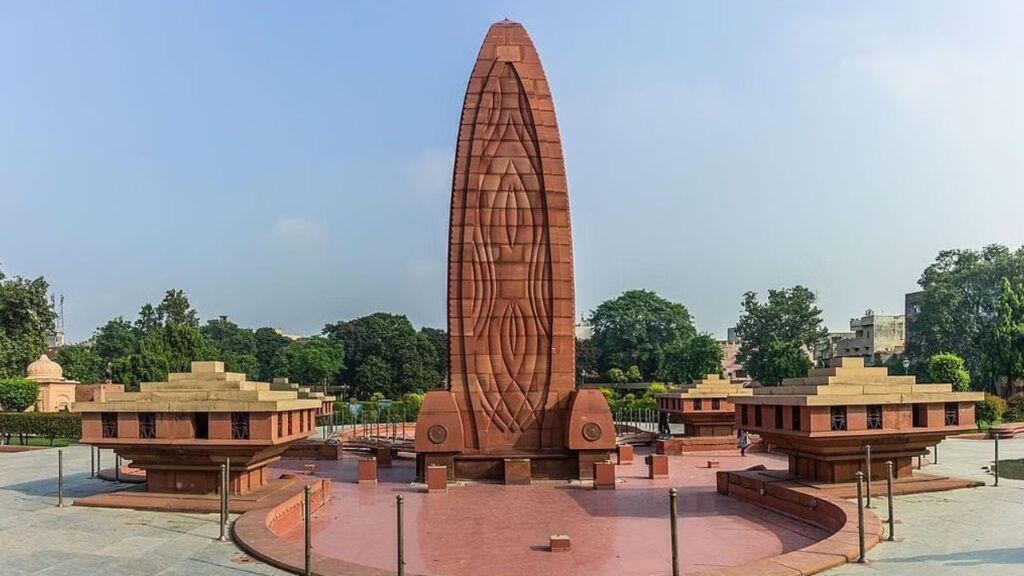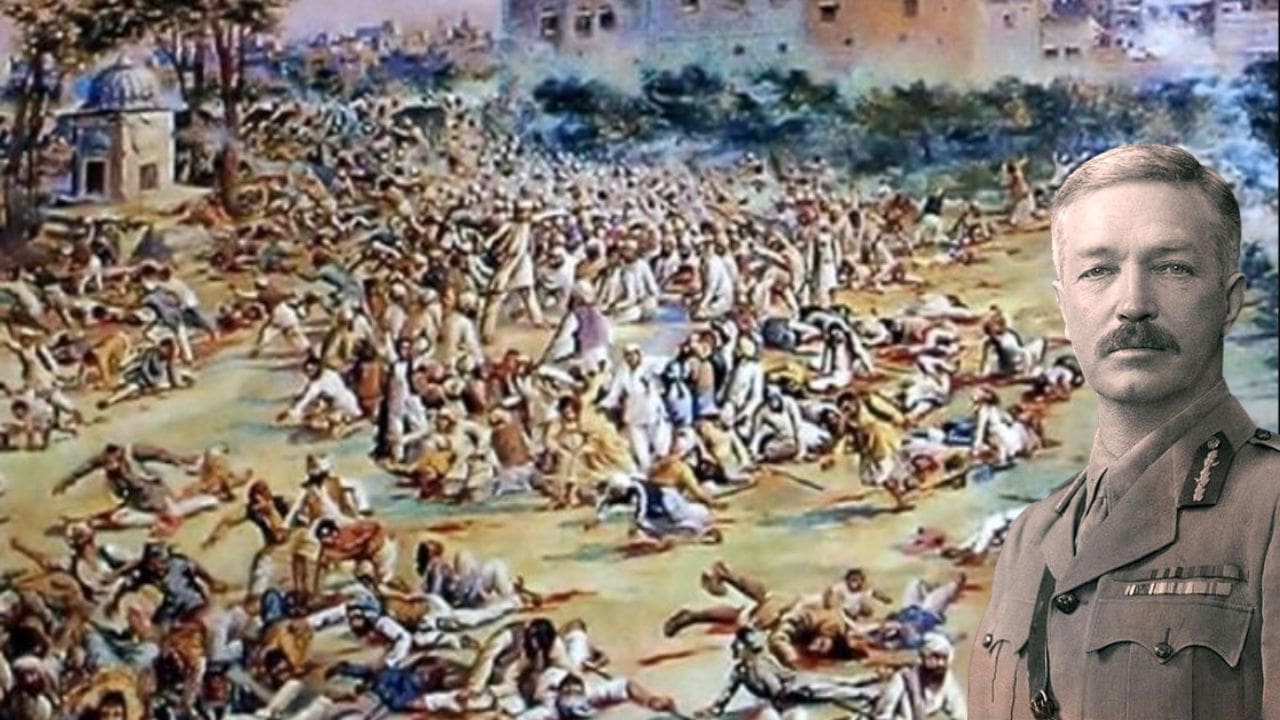The Jallianwallah Bagh Massacre, sometimes referred to as the Amritsar Massacre, was a horrific incident that took place in Amritsar, Punjab, India, on April 13, 1919. It is considered one of the darkest chapters in Indian history and a turning point in the Indian freedom struggle. In this article, we will delve into the details of this tragic event, its background, and its impact on India’s struggle for independence.
Table of Contents
Background and Causes of the Jallianwallah Bagh Massacre
The Jallianwallah Bagh Massacre took place during the British colonial rule in India, when Indians were fighting for their freedom from the British Empire. The massacre occurred in Amritsar, a holy city for Sikhs, where a large number of people had gathered to protest against the arrest and deportation of two Indian nationalist leaders, Dr. Satyapal and Dr. Saifuddin Kitchlew. The British colonial authorities declared a state of emergency and banned all public gatherings, processions, and meetings.

General Reginald Dyer, the British military commander in Amritsar, issued an order prohibiting all public gatherings without permission. On April 13, 1919, a large crowd of unarmed men, women, and children gathered at Jallianwallah Bagh, a public garden in Amritsar, to celebrate the Baisakhi festival and protest against the British government’s policies. The crowd included many farmers from nearby villages who had come to attend the annual fair.
The Jallianwallah Bagh Massacre: What Happened on April 13, 1919
General Dyer arrived at Jallianwallah Bagh with a group of soldiers and blocked the only exit of the garden. He then ordered his troops to open fire on the unarmed crowd, without any warning or provocation. The firing continued for about ten minutes, and the troops kept shooting even as people were trying to escape by climbing over the walls or jumping into a well inside the garden. According to official records, 379 people were killed, and more than 1,200 were injured in the massacre.
The British authorities imposed a curfew and banned all news about the massacre. However, the news spread quickly through word of mouth, and the public outrage was widespread. The Indian National Congress and other political organizations condemned the massacre and demanded an independent inquiry and punishment for the perpetrators.
The Aftermath of the Jallianwallah Bagh Massacre: Reactions and Consequences
The Jallianwallah Bagh Massacre was widely condemned by the Indian public, political leaders, and the international community. It was seen as a brutal and inhumane act of violence against innocent people who were exercising their basic right to peaceful assembly and protest. The Indian press played a crucial role in spreading the news
Impact of the Jallianwallah Bagh Massacre on India’s Freedom Struggle
The Jallianwallah Bagh Massacre had a profound impact on India’s freedom struggle. It was a wake-up call for many Indians who realized that peaceful protests and negotiations with the British government were unlikely to succeed. The massacre led to a surge in nationalist sentiment, and many Indians joined the freedom struggle, including Mahatma Gandhi, who was then a relatively unknown lawyer.
Gandhi, who was deeply moved by the tragedy, launched a nationwide non-cooperation movement against the British government, calling for a boycott of British goods, courts, and schools. He urged Indians to practice non-violent civil disobedience and to refuse to pay taxes to the British government.
The massacre also exposed the brutal nature of the British colonial rule in India and the deep-seated racism and contempt for Indians that pervaded the British government and army. The incident shattered the myth of the benevolent British rule and exposed the harsh realities of colonialism.
Commemoration of the Jallianwallah Bagh Massacre: Jallianwallah Bagh Memorial and Museum
The Jallianwallah Bagh Massacre is commemorated every year on April 13, as a day of remembrance and mourning. The Jallianwallah Bagh Memorial and Museum, located at the site of the massacre, was inaugurated in 1961, to honor the victims and to educate visitors about the tragedy.
The memorial consists of a garden with a raised platform, where the bullet marks on the walls are still visible. A flame of remembrance burns perpetually in memory of the victims. The museum displays photographs, artifacts, and documents related to the massacre and the freedom struggle.
Lessons Learned from the Jallianwallah Bagh Massacre
The Jallianwallah Bagh Massacre taught many lessons to the Indian people and the world at large. It exposed the brutal nature of colonialism and the need for self-determination and freedom. It also highlighted the power of non-violent resistance and civil disobedience, as a means of achieving social and political change.
The massacre also showed the importance of preserving the memory of tragic events and honoring the victims. The Jallianwallah Bagh Memorial and Museum serve as a reminder of the sacrifices made by the Indian people in their struggle for freedom.

Jallianwallah Bagh Massacre in Literature and Art
The Jallianwallah Bagh Massacre has inspired many writers, artists, and filmmakers to depict the tragedy and its impact on Indian society. The incident has been the subject of several novels, plays, and poems, including “Train to Pakistan” by Khushwant Singh, “Jallianwala Bagh” by Gurcharan Das, and “Khooni Vaisakhi” by Nanak Singh.
The massacre has also been portrayed in several films, including “Gandhi” (1982) by Richard Attenborough, “The Legend of Bhagat Singh” (2002) by Rajkumar Santoshi, and “Amu” (2005) by Shonali Bose.
International Reactions to the Jallianwallah Bagh Massacre
The Jallianwallah Bagh Massacre sparked outrage and condemnation across the world. The incident was widely covered by the international press, and many foreign leaders and organizations expressed their solidarity with the Indian people.
The massacre also led to a decline in the popularity of the British government and its policies in India. The incident was a major blow to the British image and prestige, and it contributed to the growing demands for Indian independence.
Role of the British Government and Its Apology
The British government initially defended the actions of General Dyer and his troops, stating that the massacre was necessary to maintain law and order in the face of a supposed rebellion. However, as news of the tragedy spread, the government faced mounting criticism and pressure to take action.
In 1920, a committee appointed by the British government, known as the Hunter Commission, investigated the incident and held General Dyer responsible for the massacre. Dyer was stripped of his command and forced to retire.
In 2019, on the centenary of the massacre, British Prime Minister Theresa May issued a statement expressing deep regret and acknowledging the pain and suffering caused by the incident. However, she stopped short of a formal apology, stating that the British government could not be held responsible for the actions of a previous government.
The lack of a formal apology has been a point of contention for many Indians and has led to calls for reparations and compensation for the victims and their families. The issue remains unresolved, and it continues to be a source of tension in the relations between India and Britain.
Conclusion
The Jallianwallah Bagh Massacre was a tragic event that had far-reaching consequences for India’s freedom struggle and the world at large. The incident exposed the brutality of colonialism and highlighted the power of non-violent resistance and civil disobedience as a means of achieving social and political change.
The massacre also served as a reminder of the importance of preserving the memory of tragic events and honoring the victims. The Jallianwallah Bagh Memorial and Museum stand as a symbol of the sacrifices made by the Indian people in their struggle for freedom.
While the British government has expressed regret over the incident, the lack of a formal apology continues to be a source of tension between India and Britain. However, the Jallianwallah Bagh Massacre remains an important event in the history of India and the world, and its memory will continue to be preserved for generations to come.
FAQs on Jallianwallah Bagh Massacre
Q. When did the Jallianwallah Bagh Massacre take place?
A. The Jallianwallah Bagh Massacre took place on April 13, 1919.
Q. Who was responsible for the Jallianwallah Bagh Massacre?
A. General Reginald Dyer and his troops were responsible for the Jallianwallah Bagh Massacre.
Q. How many people were killed in the Jallianwallah Bagh Massacre?
A. Around 400 people were killed and over 1,000 were injured in the Jallianwallah Bagh Massacre.
Q. What was the impact of the Jallianwallah Bagh Massacre on India’s freedom struggle?
A. The Jallianwallah Bagh Massacre had a profound impact on India’s freedom struggle, leading to a surge in nationalist sentiment and the launch of the non-cooperation movement by Mahatma Gandhi.
Q. Is there a memorial for the Jallianwallah Bagh Massacre?
A. Yes, the Jallianwallah Bagh Memorial and Museum is located at the site of the massacre and serves as a reminder of the sacrifices made by the Indian people in their struggle for freedom.
Read Other Articles:
- National Cherry Blossom Festival: A Celebration of Spring.
- Pi Day: Celebrating the Mathematical Constant and its History.
- International Olympic Day 2022
- Yoga- When And Where Its Origin And How To Meditate?
- World Refugee Day: Significance, History, Theme, and facts
- World Wind Energy Day
- World Day Against Child Labour
- World environment day: Why it is celebrated?
- International Chocolate Day 2022
- International Day Against Drug Abuse And Illicit Trafficking
- World Day For International Justice 2022
- WORLD POPULATION DAY : HISTORY, PURPOSE, SIGNIFICANCE
- International Cat Day 2022
- The International day for older Persons: History,Theme & significance.
- Maundy Money: A Royal Tradition
- Passover: A Journey from Slavery to Freedom

